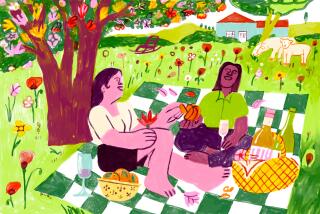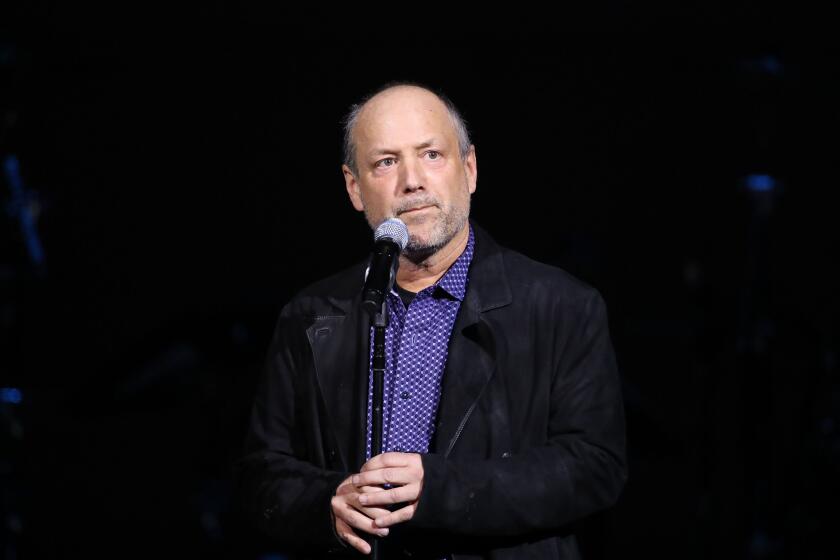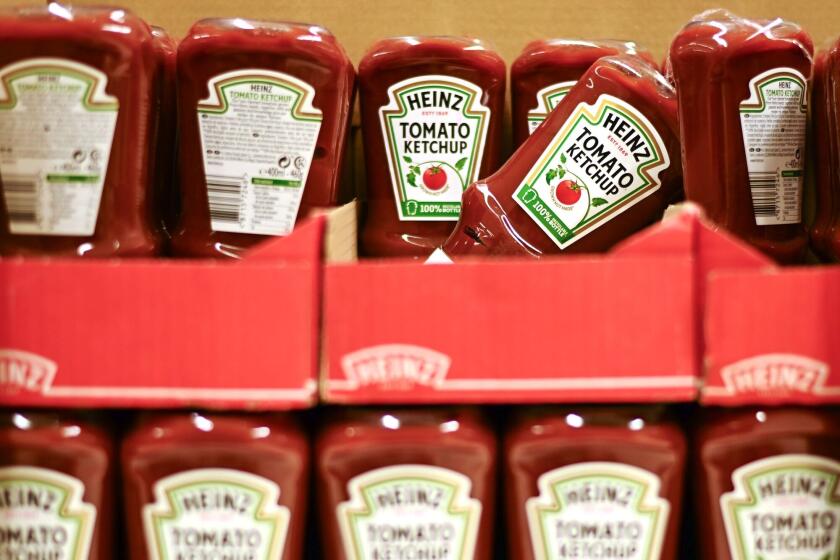Despite Late Rains, 1989 Bloomed as Good Year for California Vintners
- Share via
California wine makers moaned loudly after the long hours and hard work they endured throughout the harvest, but taken as a whole, 1989 wasn’t a year of total pain and suffering for the wine industry.
It was a year when September rains hit California’s north coast, turning a potentially lucrative and exceptional harvest into one that required a lot more work than in many years.
It was, however, a year when a lot of winery owners took a deep breath and raised prices--and found, surprisingly, that the public didn’t balk as much as they had expected. But there were rumblings of a 1990 backlash.
The 1989 harvest turned out to be of generally high quality and slightly larger than 1988. So all the wailing was just a lot of sound and fury.
High prices were no barrier for Bordeaux producers, who released the 1986 red wines with exalted comments and prices to match. Touting 1986 as the fifth great vintage in the last six years and a vintage to rival them all, the Bordelais asked and received inflated prices.
But French Burgundy producers found the going rougher. Americans finally called time out as prices for red Burgundy approached $100 a bottle.
Chile made its first major thrust to market wine in the United States, and the wines showed great potential. Italian wine makers (aided in part by a surge in Italian restaurants here) rebounded from the black eye of 1986 when deaths were attributed to tainted wine in Italy. In fact, if there was an “imported wine story of the year,” it was the rise of top-quality Italian red wine to super-premium levels.
Light red wine made a comeback as interest in White Zinfandel and wine coolers began to peak.
More acquisitions occurred. Heublein spent $150 million to buy The Christian Brothers; Klein Foods bought Rodney Strong Vineyards for $40 million; a Vintech joint partnership bought Domaine Laurier; Mondavi bought Byron, and a French firm acquired Scharffenberger.
In November, government-mandated warning labels began appearing on the back of wine bottles and other alcoholic beverages, but some consumer groups argued that the label was too small and a debate raged.
The Napa Valley Wine Train began rolling despite vigorous, often vitriolic opposition. It came as Napa County was restricting new winery development to slow down the rush of weekend tourists who were clogging the valley’s once-bucolic side roads.
Wine also lost a number of vital figures. Among the obituaries: William Durney, founder of Durney Vineyards in Carmel Valley; Alexis Lichine, longtime French wine marketer and author; Bruno Benziger, who created one of the decade’s greatest success stories, Glen Ellen Winery, and Joseph Swan, famed Sonoma County wine maker.
Following are random items from around the California wine country as well as personal picks for the best wine in various categories. (Availability was a factor; it makes no sense to praise products you can’t buy.) A bargain wine is listed in some categories.
Sauvignon Blanc of the Year: 1988 Adler Fels ($9.75)--This assertively herbal wine makes a bold statement and carries it off beautifully. The wine improves with air and with food. I also love the gorgeous 1988 Spottswoode Sauvignon Blanc ($10), but it’s largely unavailable. Close behind were 1988 Charles Shaw ($9.50), 1988 Kenwood ($9), 1988 Iron Horse ($9.50), 1988 De Loach (not the Fume Blanc, $9), 1988 Dry Creek ($9.25) and 1988 Sterling ($10). Bargain of the Year: 1987 E. and J. Gallo ($3.50), a marvelously balanced wine.
Health Claim: At the Wine Industry Technical Symposium, stout Peter Ventura, marketing executive with Robert Mondavi Winery, spoke on the health benefits of moderate consumption of wine. Later, moderator Ed Everett of New World Wines, a San Francisco marketing company, who has a bare pate, said: “You heard Peter say that a claim could be made that wine helps control weight. Well, I’m not sure he can make that claim for himself any more than I can make a claim that wine prevents baldness.”
Gewurztraminer of the Year: 1988 Navarro ($8)--Ho-hum, another year, another great Gewurz for this small Anderson Valley winery, the sixth year Navarro has won the honor. Might as well retire the trophy and give it to Ted Bennett and Debra Cahn. Runners-up: 1988 Davis Bynum ($8), 1988 Mark West ($8) and 1988 St. Francis ($7.50). Bargain: 1988 Napa Ridge ($5.20).
Uh-huh: Two wine lovers in a liquor store were chatting about a Conn Creek wine. A beer delivery man overheard the conversation and said, “Concrete? Wow, that oughta be a heavy wine.”
Merlot of the Year: 1986 Clos Pegase Artist’s Series ($15.50)--Another close call, with 1986 Cuvaison ($18), 1986 Shafer ($15), 1986 Silverado ($13), 1986 Lakespring ($12), 1986 Ferrari-Carano ($14.50) and 1986 Newton ($15.75) also impressive. The finesse of the Clos Pegase struck me as being a classically fine-tuned wine. Since it is in limited supply, my No. 2 pick is the Cuvaison, winner of the award two years running for its 1984 and 1985 Merlots. Bargain: 1987 Golden Creek ($7.50).
Worst Cabernet Sauvignon Value of 1989: 1985 Stag’s Leap Cask 23, which ought to be renamed Cash 23 based on its price tag of $75. The wine has a stinky, weedy aroma and finished last or near-last in five blind tastings. A number of wine reviewers rate this wine highly. Chacun a son gout. Sure, there’s a load of flavor here, but the stuff is anything but Napa Valley Cabernet. Three big bottles of Cask 23 sold for $55,000 at the Napa Valley Auction last spring, before this wine was priced. Could it be that the auction price helped determine the $75 shelf price? Or was it merely ego that led to this price? This is an awful precedent, not to mention a strange wine. (Nor do I like 1986 Stag’s Leap SLV Cabernet, which is “only” $30. What’s going on here?)
Riesling of the Year: 1988 Hogue Cellars (Washington) ($6)--As much as I liked 1988s from Freemark Abbey, Navarro, Trefethen, Greenwood Ridge, Obester and Haywood, this wine beats ‘em all for pure pear-like fruit, spice and richness in a complex yet dry package.
Mixed Signals: In January, when Sebastiani Winery was still planning to release a wine called Domaine Chardonnay that had no Chardonnay grapes in it, winery president Don Sebastiani in a speech called on the wine industry to “avoid artificial pretense.” (Federal regulators soon quashed the idea of a non-Chardonnay wine with that brand name.)
Mixed Message: Wine Institute, the San Francisco-based industry trade organization, tested a print ad campaign in the spring that included one ad showing a man and his dog. The caption said simply, “I drink wine, he drinks beer.” Said one wag, “Amazing. A talking dog.”
Mixed Media: In a feature story called Bridal Showcase 1989, the St. Helena Star, located in the heart of the Napa Valley, carried a story on how suitors could get their girlfriends to say yes to a marriage proposal. The “story” was actually a press release from Great Western Winery in New York State, and the paper ran it alongside a picture of a bottle of--gasp--a New York State Champagne.
Redemption: The St. Helena Star redeemed itself late in the year. Atop a story and picture showing a film crew shooting a segment of a television series, was the clever headline “Hollywood and vine.”
Chardonnay of the Year: 1987 Flora Springs Barrel Fermented ($21)--The 1987 crop of Chardonnays didn’t excite me as a group, but there were a number of stylish wines, including Sterling Winery Lake ($20), Cuvaison ($16), Arrowood ($16), Chateau St. Jean Belle Terre ($16), Matanzas Creek ($18), Ferrari-Carano ($15), Cain-Carneros ($16) and Grgich ($22). But the beautifully structured Flora Springs, with its creamy texture and rich finish, is a wine maker’s wine with complexity and fruit. Bargain: 1988 Hess Select ($8.75).
Class: After the death of Russian River wine maker Joe Swan of cancer in January, his wife, June, sent invitations to some of Joe’s friends to attend a Super Bowl Sunday wake in Joe’s honor. The invitation opened with a line, “Joe has gone on ahead of us.”
Chenin Blanc of the Year: 1988 Folie a Deux ($7)--Melon-lemon, spice and complexity in a mostly dry wine with enough fruit to make you think otherwise. There were a lot of great ’87 Chenin Blancs (White Oak, Grand Cru, Dry Creek, Villa Mt. Eden, Hacienda, Simi and Stevenot), but the Folie a Deux has the broadest appeal.
Pinot Noir of the Year: 1987 Gary Farrell Sonoma County ($15)--Pure cherrylike fruit and finesse, a wine of immense appeal and, in some ways, better than Farrell’s 1987 Howard Allen wine ($20). Other great wines: 1987 Sterling Winery Lake ($20), 1986 Byron ($13), 1987 Mondavi Reserve ($22), 1986 Wild Horse ($16), and 1987 Williams-Selyem ($30 but unavailable). Bargain: 1987 The Monterey Vineyard Limited Release ($8).
Mobility: Grace Family Vineyards, which makes a tiny quantity of sensational Cabernet, was developing a label for its wine. On it was a phrase telling the consumer that the wine was aged in French Limousin oak. The first labels back from the printer had the word spelled Limousine. Cracked winery owner Dick Grace, “Well, at least we know our wine will travel well.”
Cabernet Sauvignon of the Year: 1985 Beringer Private Reserve ($30)--Broad, expansive fruit and wonderful depth and complexity make this about as good as anything Beringer has yet produced. It beat a host of great competitors, including 1986 Arrowood ($18), 1986 Shafer Stag’s Leap ($16), 1985 Burgess ($18), 1986 Caymus Estate ($23), 1984 Raymond Reserve ($20), 1986 Forman ($20), and 1986 William Hill Reserve ($24.50). Bargain: 1986 J. Lohr ($7).
Meritage Wine of the Year: (Meritage is a term used when referring to an American wine blended from the traditional Bordeaux grape varieties.) 1985 Sterling Reserve ($30), a monumental wine, just ahead of 1985 Cain Five ($26), which is more compact. Others scoring well: 1985 Opus One ($55), 1986 Cosentino Select ($22), 1986 Trilogy ($30).
Anti-American Award of the Year: Tie, to the state of Pennsylvania and to those folks who put out a wine called “Marilyn Merlot.” Pennsylvania, which controls the retail sale of alcoholic beverages through a chain of state-owned stores, wanted to sell its own line of wines to compete with brand items and chose a red and a white wine from Bordeaux. Pennsylvania, which boasts more than four dozen wineries, apparently wasn’t good enough to produce reliable red and white table wines to meet the needs of the Pennsylvania Liquor Control Board. Nor were the approximately 1,500 wineries in 42 other states that have wineries. Marilyn Merlot, marketed for the last few years, was bad enough, but now the wine is no longer even made in the United States; it’s a product of France.
Worst Chardonnay Value of the Year: 1987 Chalone ($24)--Bizarre wine with musty, moldy scents, lots of toasted oak and little fruit. Even those who love the exotic Chalone style may have a hard time with this wine.
Sparkling Wine of the Year: 1986 Domaine Mumm Winery Lake ($23)--Sublime wine with quite a bit of fruit character; in the year since release it has grown more and more complex.
Shirley MacLaine Award: To the Quartzilizer, a $20 quartz rock with a small chain attached. You’re supposed to plop the rock into your wine and in a few minutes the wine tastes better. Does it change the acid or pH? Does it remove tannin, add body, take away bitterness? Literature included doesn’t say. My taste tests have been inconclusive: two mediocre wines I tested it on stayed decidedly mediocre.
White Zinfandel of the Year: 1988 Seghesio ($5)--Honest, off-dry, and quite fruity, one of the top efforts with this kind of wine. Others: William Wheeler, De Loach, Santino.
Quote of the Year: “Self-adoration is the greatest sin man can commit against himself.”--Andre Tchelistcheff, one of California’s greatest wine makers.
Quip of the Year: In late June, it was announced that The Christian Brothers winery would sell out after 107 years to a British-based conglomerate. The day after the sale was announced, longtime cellar master Brother Timothy and Brother David, director of the winery, were having a hamburger at The Spot, a cafe in St. Helena. Mike Martini, wine maker at the Louis Martini Winery, walked in to grab a bite of lunch and spotted the two men sitting at a table. “Hey, guys,” said Martini, “need a job?”
Wine of the Week: NV Gundlach-Bundschu Sonoma Red ($4.50)--This is the way California red wine should taste. There is a Zinfandel kind of fruity quality about it, some aging in oak and none of the defects often associated with such non-vintage red wines. It has a load of flavor for the price and may be seen discounted to below $4. This is a better example of wine making than most of those $4 Pop-Premium Cabernets you see out there.
More to Read
Eat your way across L.A.
Get our weekly Tasting Notes newsletter for reviews, news and more.
You may occasionally receive promotional content from the Los Angeles Times.








